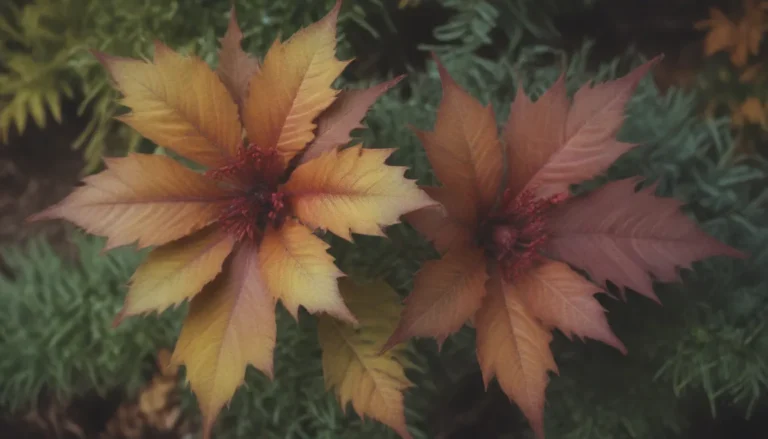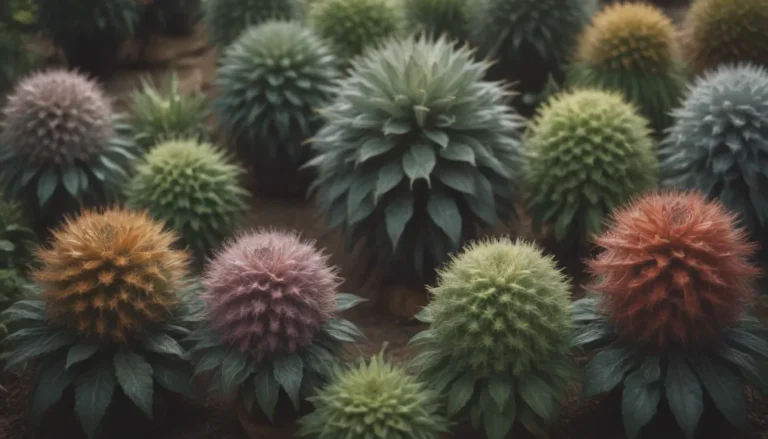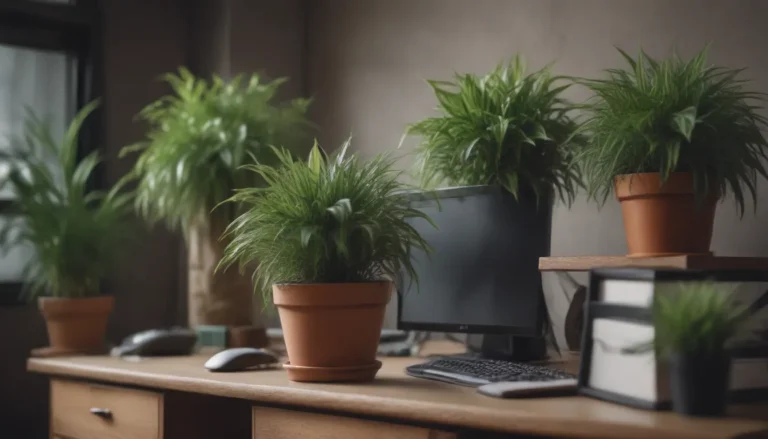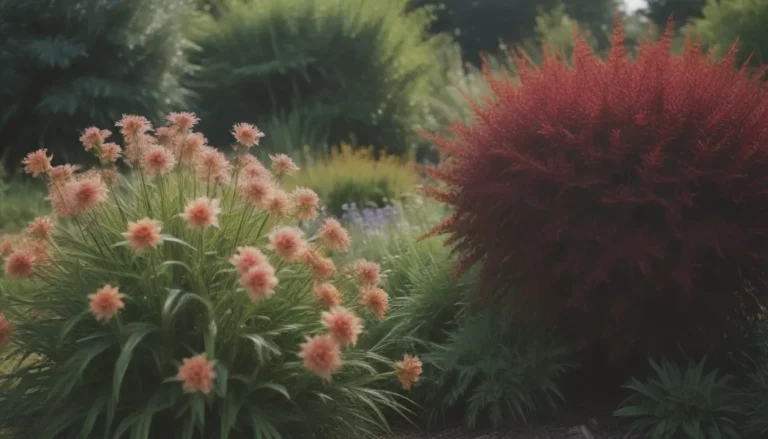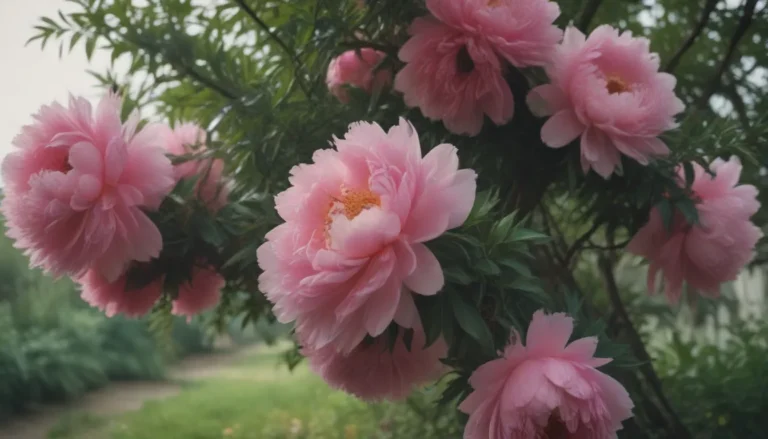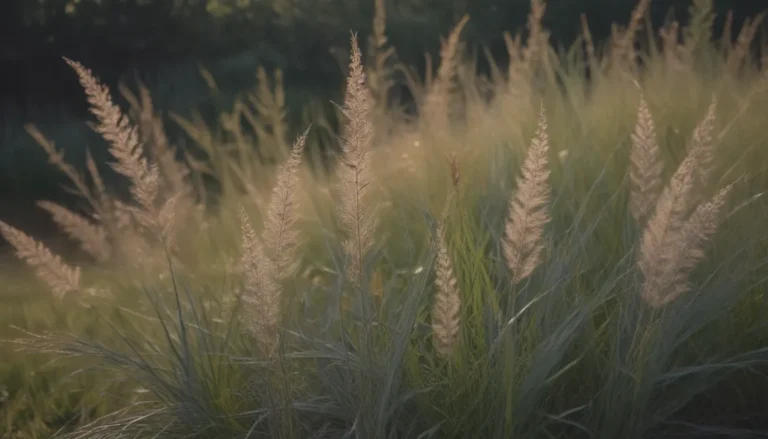Discovering the World of Aloe Plants: A Comprehensive Guide to 21 Varieties and Care Tips

Are you a succulent enthusiast looking to expand your plant collection? If so, you’re in luck! Aloe plants are not only beautiful additions to any garden or indoor space, but they also have a variety of practical uses. Most people are familiar with the popular Aloe vera plant, known for its soothing gel that’s fantastic for sunburns and other skin irritations. But did you know that there are over 500 different types of aloe plants out there, each with its unique characteristics and care requirements?
In this in-depth guide, we’ll explore 21 types of aloe plants, ranging from the well-known Aloe vera to the lesser-known varieties that are just as stunning and beneficial. From identifying each variety to providing essential care tips, this article will equip you with the knowledge you need to cultivate a thriving aloe garden. So grab your gardening gloves and let’s dive into the wonderful world of aloe plants!
Getting to Know Aloe: Identification and Care Tips
Before we delve into the specifics of each aloe variety, let’s discuss some general care tips that apply to most types of aloe plants. Whether you’re a seasoned succulent grower or a novice gardener, these guidelines will help you provide the best possible environment for your aloe babies to thrive:
Aloe Care Basics
- Soil: Aloe plants thrive in loose, gritty soil that mimics the desert regions they are native to. Amend rich soil with sand to improve drainage, and aim for a neutral to slightly alkaline pH.
- Sun Exposure: Most aloe plants prefer bright, indirect sunlight. Ensure your plants receive adequate light, but protect them from harsh midday sun, especially in hot climates.
- Watering: Allow the soil to dry out completely between watering sessions. Overwatering is a common issue with aloe plants, so err on the side of caution and water sparingly.
- Temperature: Aloe plants are hardy and can tolerate a wide range of temperatures, but most prefer warm to hot conditions. Protect them from frost and extreme cold.
With these fundamental care tips in mind, let’s explore 21 fascinating types of aloe plants, complete with identification details and specialized care requirements for each variety.
Types of Aloe Plants: Identification and Care Tips
1. Aloe Vera (Aloe barbadensis Miller)
- Native Area:
- USDA Growing Zones:
- Height:
- Sun Exposure:
- Flower Color: Yellow, red, orange
Did you know? Aloe vera is not only a popular houseplant but also boasts a variety of medicinal properties, making it a staple in many households for its skincare benefits.
2. Lace Aloe (Aloe aristata)
- Native Area:
- USDA Growing Zones:
- Height:
- Sun Exposure:
- Flower Color:
Fun Fact: Lace aloe plants resemble Haworthia plants with their distinctive white whiskers and bumpy leaf texture, making them a unique addition to any succulent collection.
3. Golden Toothed Aloe (Aloe nobilis)
- Native Area:
- USDA Growing Zones:
- Height:
- Sun Exposure:
- Flower Color:
Pro Tip: Golden toothed aloe plants feature striking yellow spikes and rose-tipped leaves, making them a standout choice for mixed succulent gardens.
4. Tiger Tooth Aloe (Aloe juvenna)
- Native Area:
- USDA Growing Zones:
- Height:
- Sun Exposure:
- Flower Color:
Plant Care Tip: Tiger tooth aloe plants produce soft, flexible spikes that add charm to their appearance. Give them a summer vacation outdoors for optimal growth.
5. Short-Leaf Aloe (Aloe brevifolia)
- Native Area:
- USDA Growing Zones:
- Height:
- Sun Exposure:
- Flower Color:
Gardening Tip: Short-leaf aloe plants are excellent ground cover options for regions with mild temperatures. Their orange blooms add a pop of color to any garden.
6. Red Aloe (Aloe cameronii)
- Native Area:
- USDA Growing Zones:
- Height:
- Sun Exposure:
- Flower Color:
Did you know? Red aloe plants get their name from their vibrant coppery-red leaves, which intensify in color under dry conditions. Avoid overwatering these resilient plants.
7. Snake Aloe (Aloe broomii)
- Native Area:
- USDA Growing Zones:
- Height:
- Sun Exposure:
- Flower Color:
Interesting Fact: Snake aloe plants are named for their unique blossom shape, covered with long bracts that resemble a serpent. Perfect for rocky slopes and dry environments.
8. Sunset Aloe (Aloe dorotheae)
- Native Area:
- USDA Growing Zones:
- Height:
- Sun Exposure:
- Flower Color:
Beauty Tip: Plant Aloe dorotheae in full sun to bring out its vibrant orange and salmon hues. Perfect for rock gardens or container cultivation.
9. Malagasy Tree Aloe (Aloe vaombe)
- Native Area:
- USDA Growing Zones:
- Height:
- Sun Exposure:
- Flower Color:
Fun Fact: Malagasy tree aloe plants resemble trees in appearance and produce stunning red flower clusters that attract bees, butterflies, and hummingbirds. A unique addition to any garden.
10. Spiral Aloe (Aloe polyphylla)
- Native Area:
- USDA Growing Zones:
- Height:
- Sun Exposure:
- Flower Color:
Did you know? Spiral aloe plants are characterized by their mesmerizing spiral shape, making them a popular choice for rock gardens and unique landscaping features.
11. Sand Aloe (Aloe hereroensis)
- Native Area:
- USDA Growing Zones:
- Height:
- Sun Exposure:
- Flower Color:
Plant Care Tip: Sand aloe plants exhibit color variations based on light exposure and irrigation levels. Use caution when handling due to sharp leaf edges.
12. Soap Aloe (Aloe maculata)
- Native Area:
- USDA Growing Zones:
- Height:
- Sun Exposure:
- Flower Color:
Fun Fact: Soap aloe plants have sharp spines but require minimal maintenance beyond removing spent blossoms. Avoid harvesting leaves, as these slow-growing plants may not recover.
13. Mountain Aloe (Aloe marlothii)
- Native Area:
- USDA Growing Zones:
- Height:
- Sun Exposure:
- Flower Color:
Beauty Tip: Mountain aloe plants feature imposing, spiny leaves and eye-catching red and yellow blooms. Perfect for frost-free, arid environments.
14. Tree Aloe (Aloe barberae)
- Native Area:
- USDA Growing Zones:
- Height:
- Sun Exposure:
- Flower Color:
Pro Tip: Tree aloe plants are ideal for poolside cultivation in frost-free climates, boasting rose-pink flowers and minimal maintenance requirements.
15. Van Balen’s Aloe (Aloe vanbalenii)
- Native Area:
- USDA Growing Zones:
- Height:
- Sun Exposure:
- Flower Color:
Interesting Fact: Van Balen’s aloe plants exhibit vibrant red coloration in direct sunlight and emit a spicy scent when crushed, adding a sensory element to your garden.
16. Krantz Aloe (Aloe arborescens)
- Native Area:
- USDA Growing Zones:
- Height:
- Sun Exposure:
- Flower Color:
Did you know? Krantz aloe plants thrive in rocky landscapes and feature striking red and orange flowers, with medicinal properties similar to aloe vera.
17. Climbing Aloe (Aloiampelos ciliaris)
- Native Area:
- USDA Growing Zones:
- Height:
- Sun Exposure:
- Flower Color:
Pro Tip: Climbing aloe plants can reach impressive heights of 30 feet, boasting vibrant orange and red flowers that trail along their climbing path. Low maintenance and easy to grow.
18. Coral Aloe (Aloe striata)
- Native Area:
- USDA Growing Zones:
- Height:
- Sun Exposure:
- Flower Color:
Beauty Tip: Coral aloe plants feature smooth leaves and coral red blooms that attract pollinators. Perfect for xeriscape landscaping, withstanding extreme weather conditions.
19. Jewel Aloe (Aloe distans)
- Native Area:
- USDA Growing Zones:
- Height:
- Sun Exposure:
- Flower Color:
Interesting Fact: Jewel aloe plants may be small in stature but boast impressive spread, filling spaces with waxy, triangular leaves and vibrant foliage that attracts pollinators.
20. Tiger Aloe (Gonialoe variegata)
- Native Area:
- USDA Growing Zones:
- Height:
- Sun Exposure:
- Flower Color:
Fun Fact: Tiger aloe plants feature striking striped leaves and low maintenance requirements, making them a popular choice for indoor and outdoor cultivation.
21. Cape Aloe (Aloe ferox)
- Native Area:
- USDA Growing Zones:
- Height:
- Sun Exposure:
- Flower Color:
Gardening Tip: Cape aloe plants feature bitter leaves used as a laxative, reaching impressive heights with tubular, multi-branched flowers. Perfect for regions with spikes along their lance-shaped leaves.
Embrace the Diversity of Aloe Plants
With over 500 types of aloe plants to choose from, the possibilities are endless when it comes to cultivating a vibrant and diverse garden. Whether you’re drawn to the soothing properties of Aloe vera or intrigued by the unique characteristics of lesser-known varieties, there’s an aloe plant for every gardening style and preference. By following the care tips outlined for each variety and embracing the unique beauty of these succulent plants, you can create a stunning oasis that not only enhances your surroundings but also provides practical benefits for your well-being.
So go ahead, explore the world of aloe plants, and let your passion for gardening flourish in the presence of these remarkable succulents. Happy planting!
